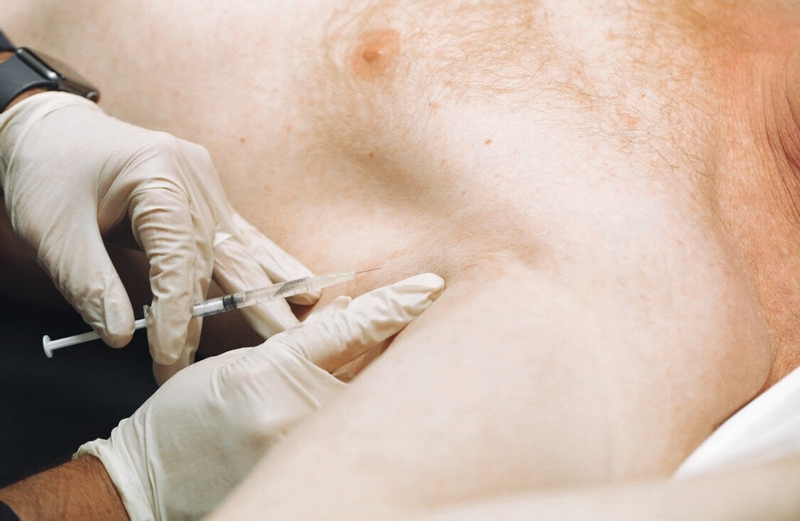Reliable Extreme Sweating Treatments for Long-term Relief and Confidence
Too much sweating, or hyperhidrosis, provides an unique obstacle that can affect both individual and expert facets of life. While topical therapies like aluminum chloride antiperspirants often offer as an initial strategy, more advanced treatments such as Botox and iontophoresis are gaining focus for their efficacy in giving long-lasting alleviation. Furthermore, incorporating way of life modifications can additionally mitigate signs, fostering higher self-confidence. The variety of options offered can be frustrating, prompting the concern of which mix may produce the most efficient outcomes for individuals seeking to reclaim control and comfort in their everyday lives.
Understanding Extreme Sweating
Extreme sweating, scientifically referred to as hyperhidrosis, can significantly impact a person's lifestyle, frequently resulting in physical discomfort and emotional distress. This condition is defined by unusually increased perspiration that occurs without common triggers such as heat or exercise. Hyperhidrosis can affect various body locations, consisting of the hands, feet, underarms, and face, causing obstacles in day-to-day tasks and social communications.
The underlying reasons for hyperhidrosis can be classified into 2 groups: key and additional. Main hyperhidrosis usually occurs with no identifiable clinical problem and typically has a genetic component. On the other hand, additional hyperhidrosis may result from a hidden medical issue, such as hormone problems, infections, or specific medications.
Recognizing the emotional effect of extreme sweating is crucial. Efficient therapy choices can aid minimize both the physical signs and symptoms and the emotional toll linked with hyperhidrosis, ultimately boosting the general top quality of life for those affected.
Topical Therapies and Antiperspirants
Topical therapies and antiperspirants represent the very first line of protection for individuals handling hyperhidrosis. These products are made to decrease extreme sweating via various active components, with light weight aluminum chloride being one of the most efficient. This substance functions by obstructing sweat ducts, thus decreasing perspiration in targeted areas.
Non-prescription antiperspirants typically include light weight aluminum salts and are ideal for mild to moderate cases of sweating. For much more serious hyperhidrosis, prescription-strength solutions are readily available, offering higher concentrations of active ingredients for improved performance. It is necessary to apply these products to dry skin, preferably in the evening, to make best use of absorption and efficacy.
Along with traditional antiperspirants, topical treatments such as glycopyrrolate creams can provide relief by inhibiting sweat gland activity. Users may experience differing levels of success, demanding a customized strategy for specific demands.
While topical therapies and antiperspirants can dramatically relieve signs and symptoms, outcomes might differ (hyper sweating treatment). It is a good idea for individuals to speak with health care professionals to identify the most suitable product and application method, ensuring optimal outcomes for handling excessive sweating effectively
Medical Treatments for Alleviation
When topical treatments and antiperspirants do not offer sufficient alleviation for hyperhidrosis, individuals may look for advanced options with medical procedures. Amongst the most efficient options is Botox (botulinum toxin), which momentarily blocks the nerves in charge of sweating. This treatment is specifically helpful for localized locations, such as the underarms, palms, and feet, with results lasting a number of months.

For those seeking longer-lasting options, microwave therapy is a cutting-edge method that damages sweat glands via targeted microwave energy, often leading to permanent reduction of sweating in dealt with areas.
In a lot more severe situations, surgical choices such as sympathectomy might be thought about. This invasive procedure entails cutting nerves that activate sweating, providing considerable alleviation but additionally carrying prospective threats and side impacts.
Way Of Living Changes and Home Solutions
Managing hyperhidrosis typically expands beyond clinical therapies, as lifestyle modifications and home solutions can significantly ease signs and symptoms. Putting on breathable fabrics such as cotton or moisture-wicking materials can assist manage body temperature level and reduce sweat. Loose-fitting clothes is likewise suggested, as it enables better air circulation.

Maintaining proper hygiene is important. Consistently bathing and making use of antibacterial soap can help control smell and maintain skin completely dry. Natural home remedy like using corn starch or talc to problem locations can soak up dampness and boost convenience throughout the day.
Finally, think about utilizing natural antiperspirants including ingredients like aluminum chloride or witch hazel, which can provide effective alleviation without extreme chemicals. By applying these way of living modifications and natural home remedy, individuals may locate significant alleviation from hyperhidrosis, promoting greater confidence in day-to-day tasks.
Looking For Expert Help

One usual method is prescription antiperspirants, which contain greater focus of aluminum chloride, effectively obstructing sweat glands. For more serious cases, therapies like iontophoresis, Botox injections, or prescription medications might be sites utilized. Iontophoresis makes use of electrical currents to temporarily interfere with the function of gland, while Botox works by inhibiting the nerves that activate sweating.
In certain conditions, surgical alternatives, such as sympathectomy, may be considered. This invasive treatment includes reducing nerves responsible for sweating, supplying a more long-term solution.
In addition, professionals can offer support on taking care of the psychological impact of hyperhidrosis, including recommendations to therapy or support system. Overall, seeking advice from a Website medical care service provider guarantees a detailed treatment strategy tailored to private requirements, eventually improving high quality of life and confidence for those impacted by extreme sweating.
Conclusion
Finally, effective management of excessive sweating involves a multifaceted strategy that incorporates topical therapies, progressed medical procedures, and lifestyle alterations. Topical antiperspirants function as a main defense, while options like Botox and iontophoresis provide significant alleviation for serious situations. Additionally, adopting breathable textiles and attending to dietary triggers can even more enhance signs and click here now symptom control. A detailed technique not only alleviates the physical signs and symptoms of hyperhidrosis however also cultivates boosted confidence and overall top quality of life for afflicted people.